🌱The Phosphate Priority - Part 2: The Great Release - New Tools to Tap Trapped Phosphate🌿
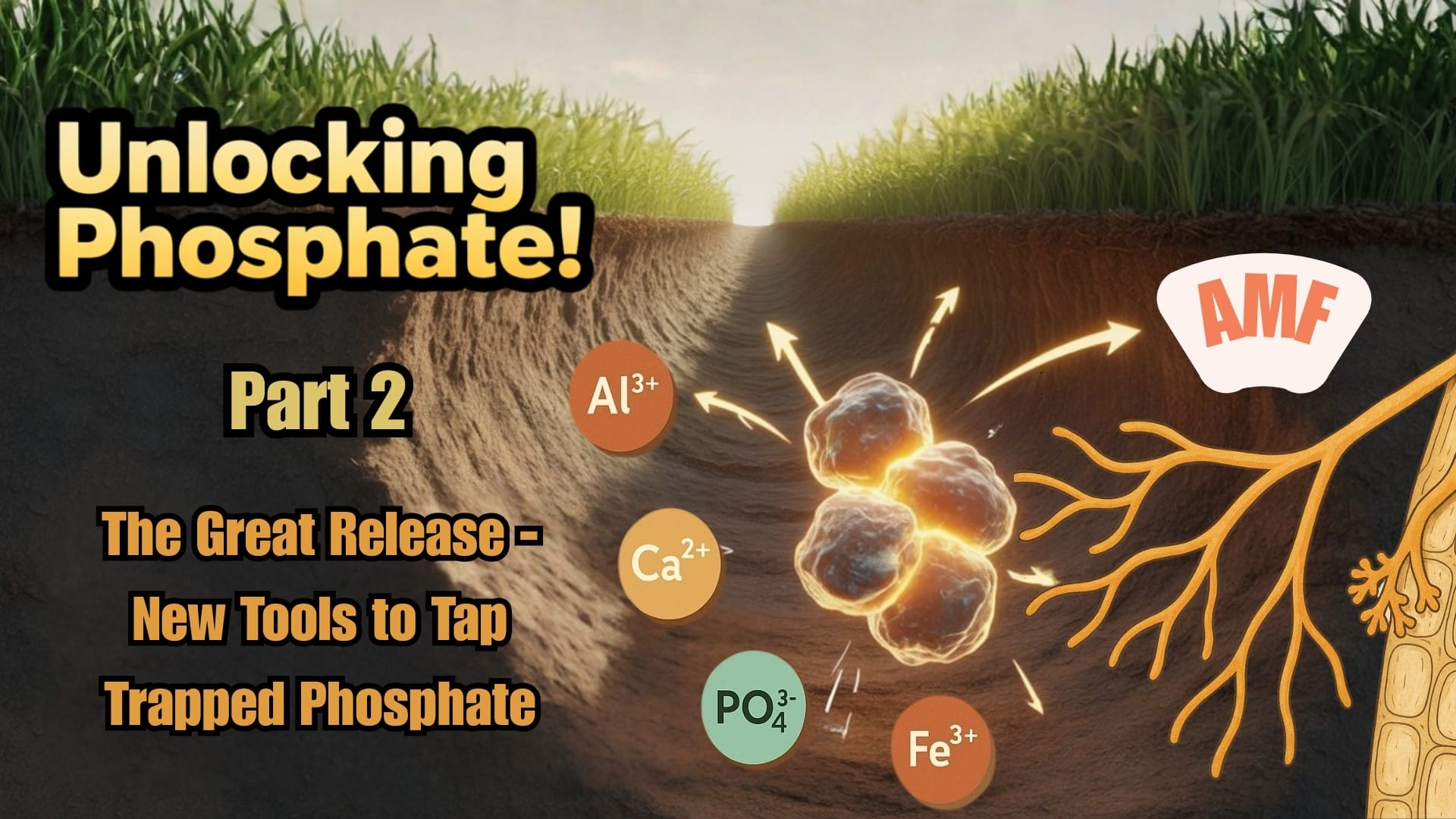
By Graeme Sait
We now understand that almost 3/4 of all applied phosphate can become tied up in insoluble forms, because this negatively-charged mineral binds so readily to calcium, iron, manganese and aluminium in your soil. You can easily monitor the state of your frozen bank account by conducting a soil test that measures “totals”. This test is often referred to as TAE or Total Acid Extractable. If your farm has a history of regular phosphate fertilising, then you will have substantial reserves of frozen phosphate. The challenge then becomes, “How do I access some of this bank account and reduce my fertiliser bill accordingly?”
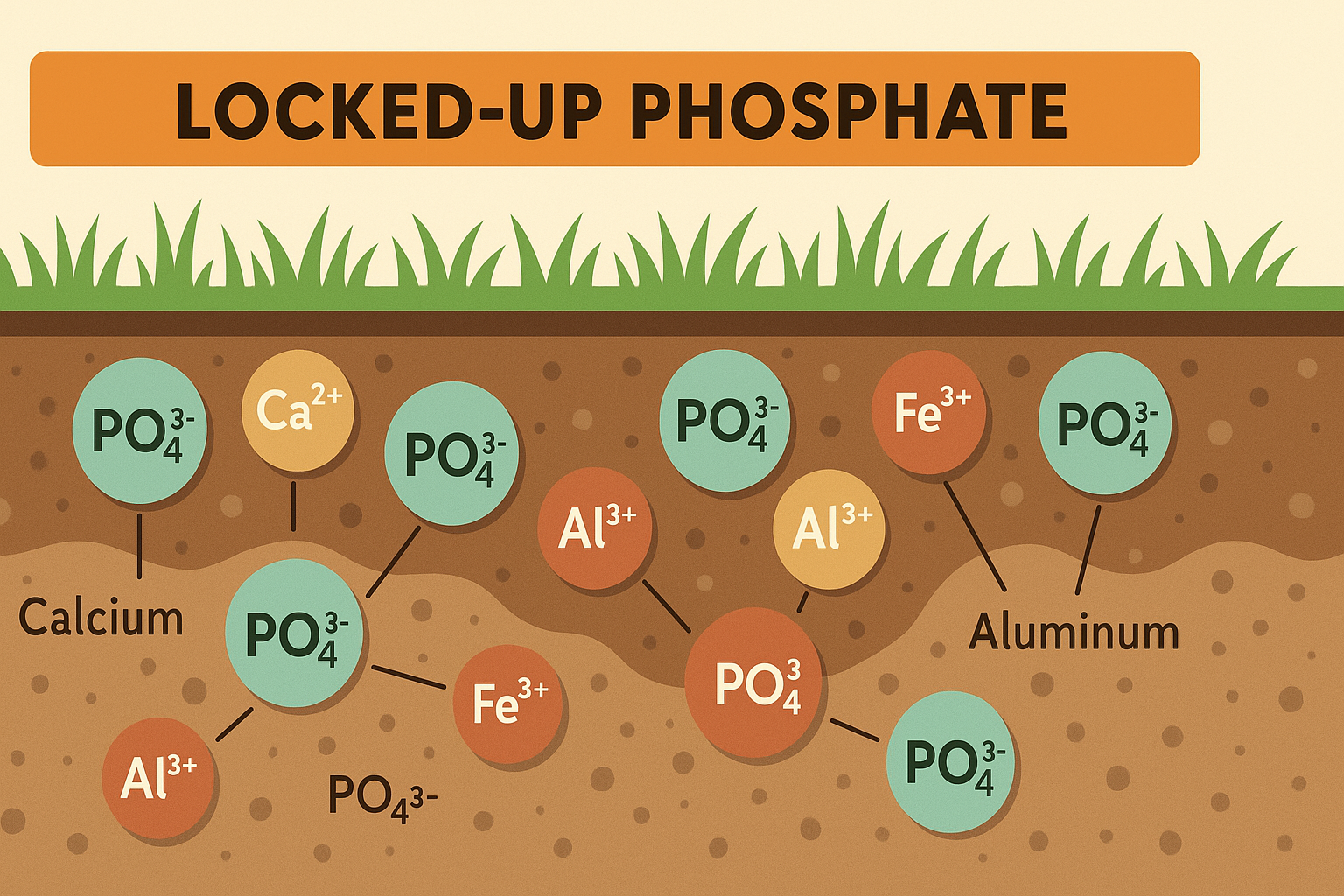
There are a number of strategies we will discuss, but we will begin with the new findings relative to another mineral that almost always presents as a drought in a sea of abundance. We are talking about silica. It is the most abundant mineral on this planet, comprising 28% of the Earth's crust, but the plant-available form is sadly lacking in many soils.
We now know that we need 100 ppm of silica, in the plant available form, called monosilicic acid, for optimum plant health and resilience. However, most soils that we test contain much less than 40 ppm. On average, organically farmed soils contain double the amount of this plant-available silica, so something we are doing in extractive agriculture is obviously impacting silica solubilisation. As always, it is worth investigating the root causes.
Mycorrhizal fungi enhance phosphate and silica availability
Mycorrhizal fungi only grow on a living plant. There are some misleading claims suggesting that these creatures can be brewed or stored in a liquid medium, and this is simply not the case. However, they can be successfully multiplied on the farm in grow bags using their favourite host plant, Sudan sorghum. The AMF can be harvested from the root mass using a compost extractor.
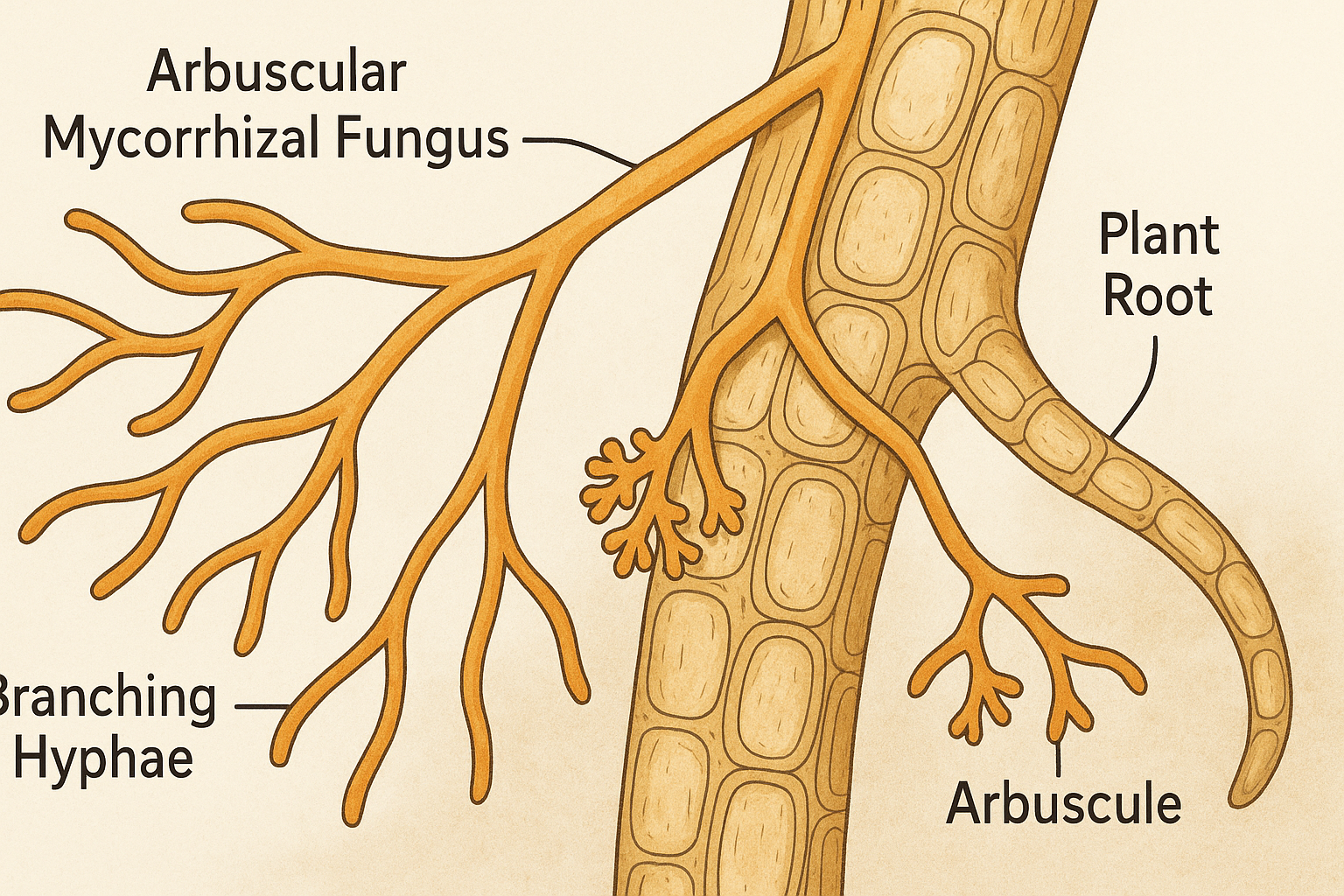
Many envisage mycorrhizal fungi foraging for immobile phosphate with their vast network of roaming hyphae. There is often an assumption that they have solubilised the phosphate they so ably transport to the plant, but this is not the case. AMF can transport phosphate from beyond the normal reaches of uncolonised plant roots, but there is no evidence that they can actually solubilise locked-up P.
It turns out that the massive hyphal network is inhabited by phosphate-solubilising bacteria (PSB), like billions of sucker fish attached to a whale shark. Like so many things in Nature, we see the universal law at work. The “give and you shall receive” deal here relates to a three-way synergy between AMF, silica and PSB.
There is a great article that highlights over 400 papers chronicling the interplay between this trio. It’s called “Contribution of Arbuscular Mycorrhizal Fungi, Phosphate–Solubilising Bacteria, and Silicon, to P Uptake by Plants” by Hassan Etesami et al.
A biological ménage à trois.
Let’s now examine the mechanics of this three-way relationship, this biological ménage à trois.
Let’s begin with silica. I have mentioned several times the fact that this mineral should really be considered an essential nutrient, and perhaps it soon will be. I have discussed the cell wall strengthening role of this mineral (along with calcium), where an obvious proactive strategy to reduce chemical intervention is to build the protective barrier that can buckle invading hyphae and blunt the mandibles of hungry sap suckers.

But equally important is the capacity of silica to elicit an immune response. Several studies, including Cherif et al and Fawe et al, have reported that silica-treated plants have enhanced activity of chitinases, peroxidase, polyphenol oxidases and flavonoid phytoalexins, all of which protect against fungal pathogens. The good news here is that these substances are not just a measure of enhanced plant immunity, they are also a measure of flavour, medicinal value and crop quality. They are what contribute to fine wine and forgotten flavours in our food.
It doesn’t stop there with silica, in 2007, Liang et al reported that metal toxicity, salinity, drought and temperature stress can all be significantly alleviated in the presence of plant-available silica (monosilicic acid).
My personal experience with the power of silica relates to our recent garlic harvest. We have just harvested some of the best, most aromatic garlic I have ever produced, and a large part of that successful program relates to the regular application of an NTS product called Sili Cal-B. This breakthrough formula features the all-important foundation trio, calcium, silica and boron.
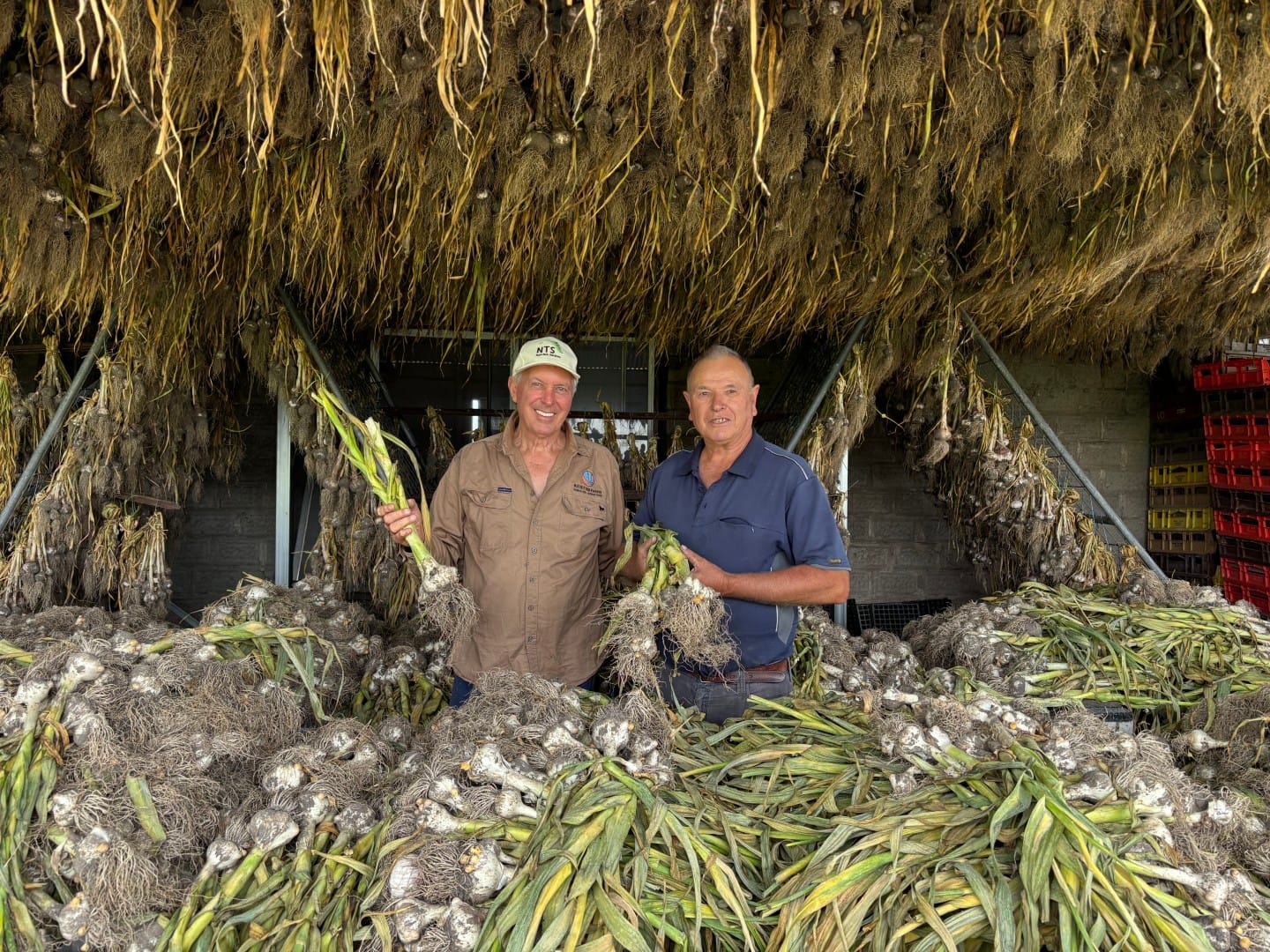
Now, back to the explanation of silica benefits - The reduction in salinity stress appears to be related to increases in the enzymes, superoxide dismutase and catalase in the crop. This increase is evident following silica applications, and these substances, which reduce the oxidative damage associated with salinity. Once again, this is a good story for consumers, because these are hugely important antioxidant enzymes in our bodies.
The drought resistance story is linked to the formation of silicified structures within the leaf, which reduce leaf heat-load and provide an effective cooling mechanism to increase tolerance to heat waves. These abiotic stresses are an integral part of the brave new world of climate change farming, and in this context, silica is emerging as a potential saviour.
The silica/phosphate link
You may be wondering about the relationship between this missing mineral, mycorrhizal fungi (AMF) and phosphate-solubilising bacteria (PSB)? Well, it turns out that silica stimulates both of these organisms.
We now understand that soluble silica increases mycorrhizal effectiveness. Two recent studies have quantified this new finding. In these strawberry studies, AMF performance was significantly enhanced in the presence of soluble silica. The mode of action here is multi-layered, but a starting point appears to relate to the increased flavonoids found in silica-treated plants. Manual et al showed that flavonoids help AMF interact with host plants. Steinkellner et al showed that flavonoids stimulated hyphae growth and branching, along with spore germination and arbuscule formation.
The enhanced root structure and stress tolerance provided by silica may also lead to better conditions for AMF establishment. In the case of our wonderful garlic crop, the cloves were treated with mycorrhizal fungi before planting. I.e. soaked in a mix of Platform, Root and Shoot. The AMF were then boosted with Sili Cal-B, the silica-rich input mentioned earlier.
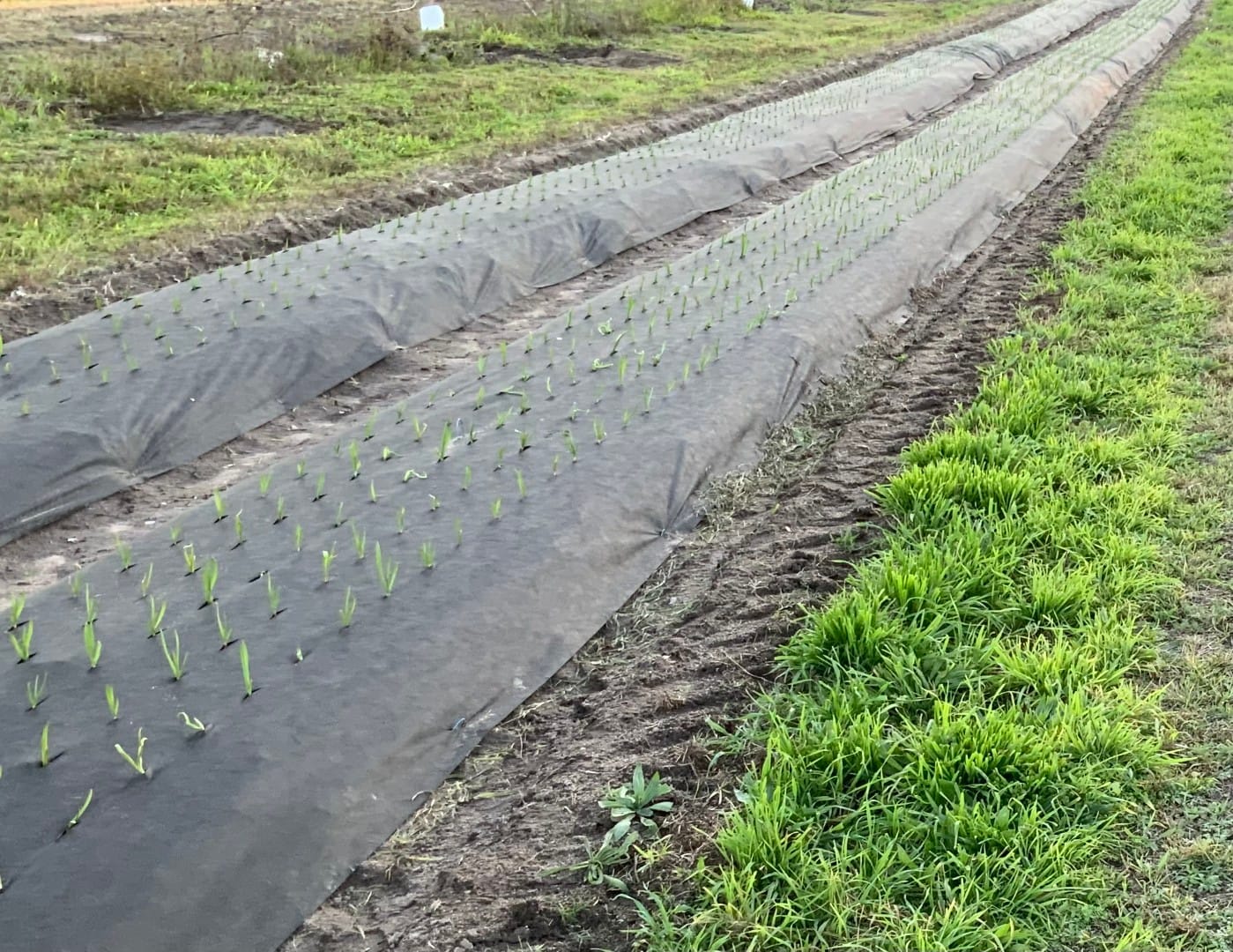
On the other side of this two-sided coin, there are multiple studies showing that AMF-colonised plants contain much higher levels of silica. There are no guidelines for optimum silica levels in plants, but we have seen good things consistently happen when you get beyond 800 ppm on a standard dry tissue test. The reason for this AMF-related, improved silica nutrition is unclear, but it appears that the vast hyphae network is a superhighway for silica access and delivery to the plant.
There are also multiple studies demonstrating that soluble silica increases phosphate uptake by the plant, and we will explore that phenomenon.
Let’s look at how plant-available silica might help you access your frozen phosphate.
The big physical function here involves soluble silica displacing phosphate from its entwinement with other minerals. As we have discussed, the most common P lockup, in more alkaline soils, involves the formation of insoluble calcium phosphate in the soil. Silica wedges apart that bond, forming calcium silicate and releasing the P for the plants. One 2018 study by Gregor et al found that soluble silica increased the soil P availability by 50%. That’s pretty impressive.
Let’s look at other potential links to this impressive outcome. Two studies have found that silica increases the organic acids, maleate and citrate, produced by bacteria and plant roots. These acids mobilise locked-up P.
The new finding that silica in basalt can sequester inorganic carbon in the soil may also be related. There is carbonic acid involved in this phenomenon called enhanced weathering, and this acid can also release frozen P. Basalt crusher dust can also increase soil pH in acidic soils, which further increases P availability.
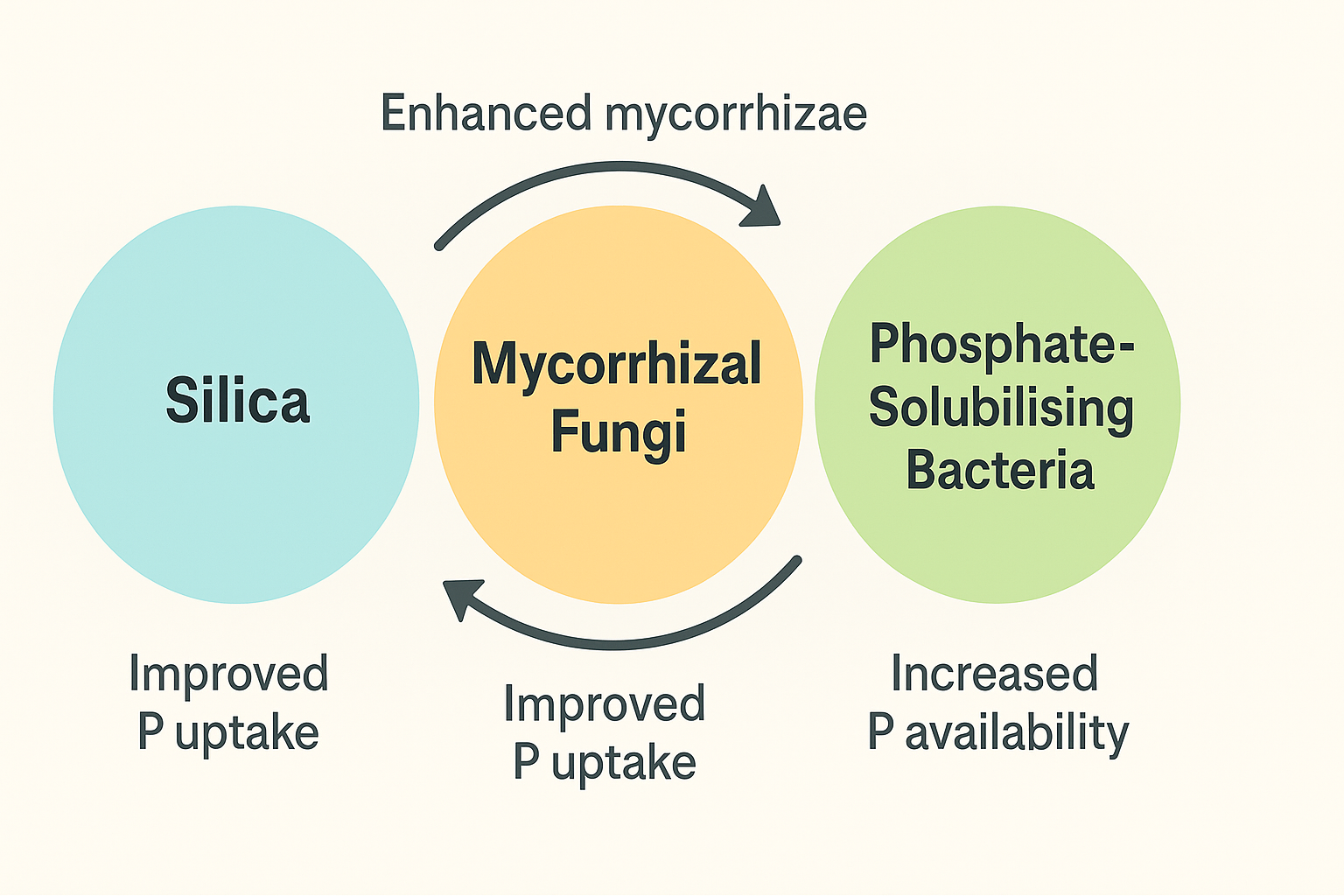
Double-Barreled Bacteria
Next, we will consider Phosphate Solubilising Bacteria (PSB), and their role in this three-way relationship. You will soon see that there is some cross-over here, because several of the most active phosphate solubilisers are also Silica Solubilising Bacteria(SSB). There is great gain in embracing these particular double-barreled solubilisers, because they often bring other skills to the root zone (rhizosphere), or to the leaf surface (phyllosphere). All of them can be multiplied on the farm to provide another low-cost yield and soil-building option. Let’s look at how they work.
Essentially, these organisms use four techniques to release locked-up phosphate in your soil, or to speed the release of plant-available phosphate from rock phosphate. These include:
1) They produce significant quantities of organic acids, like citric, malic and oxalic acid, which can chelate calcium or iron, releasing the phosphate to which they are bound. Singh and Reddy (2011) demonstrated that the inoculation of soil with Bacillus megaterium, alongside the application of soft rock phosphate, resulted in a significant increase in available phosphorus and subsequent yield increases in wheat. Our super productive, bacillus blend, called MicroForce, contains large numbers of bacillus megaterium, along with four other organisms renowned for phosphate solubilisation.
2) Some species produce indole acetic acid (IAA), a plant hormone with a profound effect on root growth. Bacterial IAA promotes root architecture (branching and more lateral roots), which provides more sites for the penetration of AMF. IAA can also increase the amount of root exudates from the plant, and all beneficial biology, including AMF, benefit from this gift.
3) PSB produce siderophores that scavenge iron and release bound phosphate in the process. They are of particular benefit in red soils, which tie up P in as little as three weeks.
4) PSB can also release organic phosphate from plant material, via the production of phosphatase, an enzyme that breaks phosphate from organic material
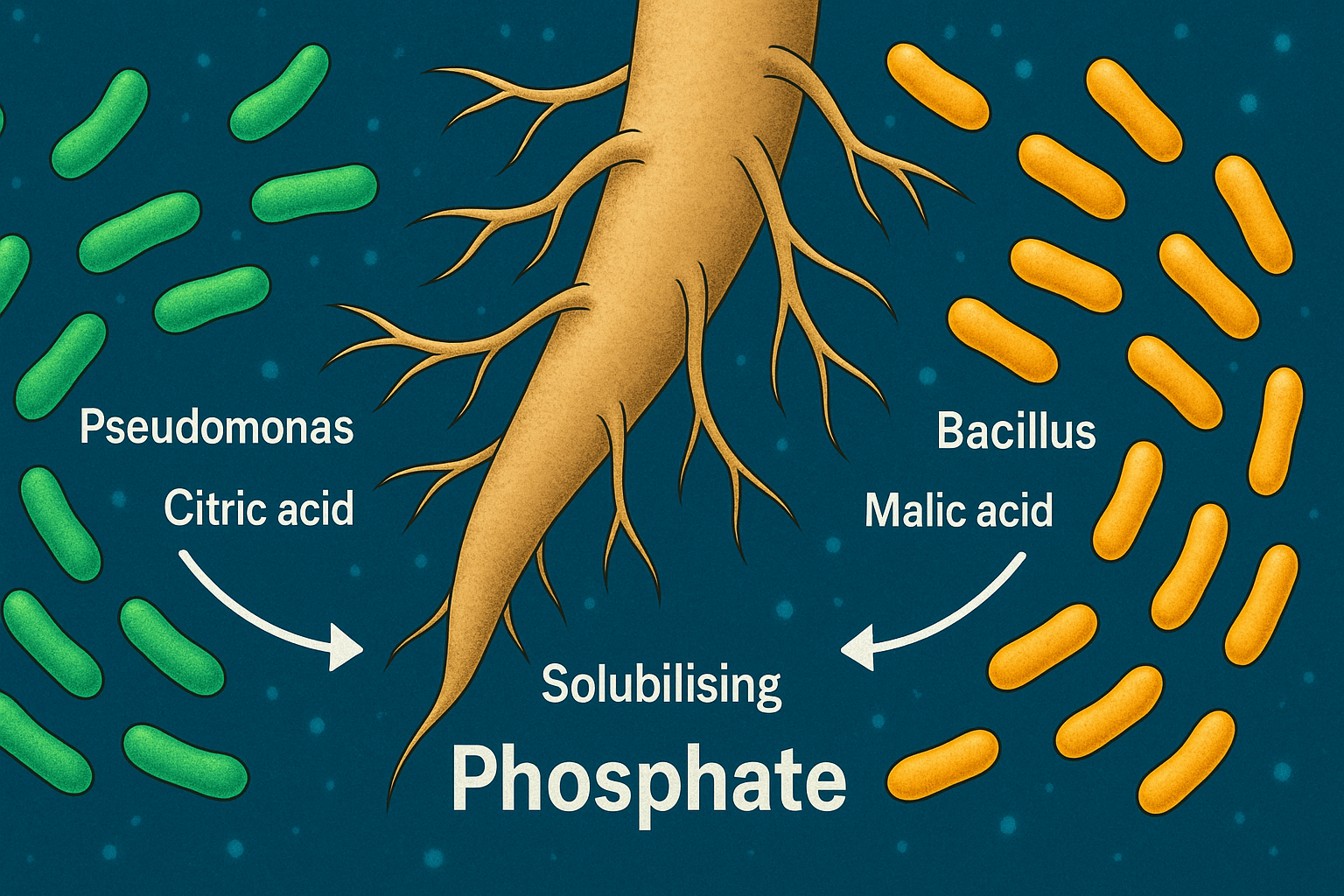
AMF - The P Harvesters
Finally, we will examine the role of AMF in this ménage à trois, and then I will suggest ways you can benefit on the farm by applying your new understanding.
AMF have many roles, but they are foremost a phosphate harvester for their host. The plants feed them up to 20% of their sugars to increase their access to super immobile phosphate, the main mineral that builds sugar in plants. AMF have co-existed with plants for over 400 million years, and their relationship is complex, but essentially, the plant trades sugar for phosphate. There is a problem here, because this trade arrangement can be ceased at the plant's discretion. If you have planted with large dollops of P, for example, the crop plants often turn off the sugar tap to AMF, as they already have what they need. Six weeks into the season, when that large dollop has locked up, they turn the tap back on. The problem here is that it takes six weeks to create that vast hyphal network, and your season is done by then. That’s why it’s a balancing act when fusing biological inputs with chemical farming.,
The Glomalin promise
Glomalin, a substance produced by AMF, is known as a humus-building trigger. In fact, it has been theorised that glomalin is responsible for up to 30% of soil carbon. This is of massive importance, on multiple levels, but this sticky glycoprotein does much more than that..
Crumb structure is the most desirable of all fertility scenarios. It turns out that silica can help glue together mini aggregates in the soil, while glomalin can help bind these into larger aggregates, which improve gas exchange and the vitality of both roots and their microbe partners.
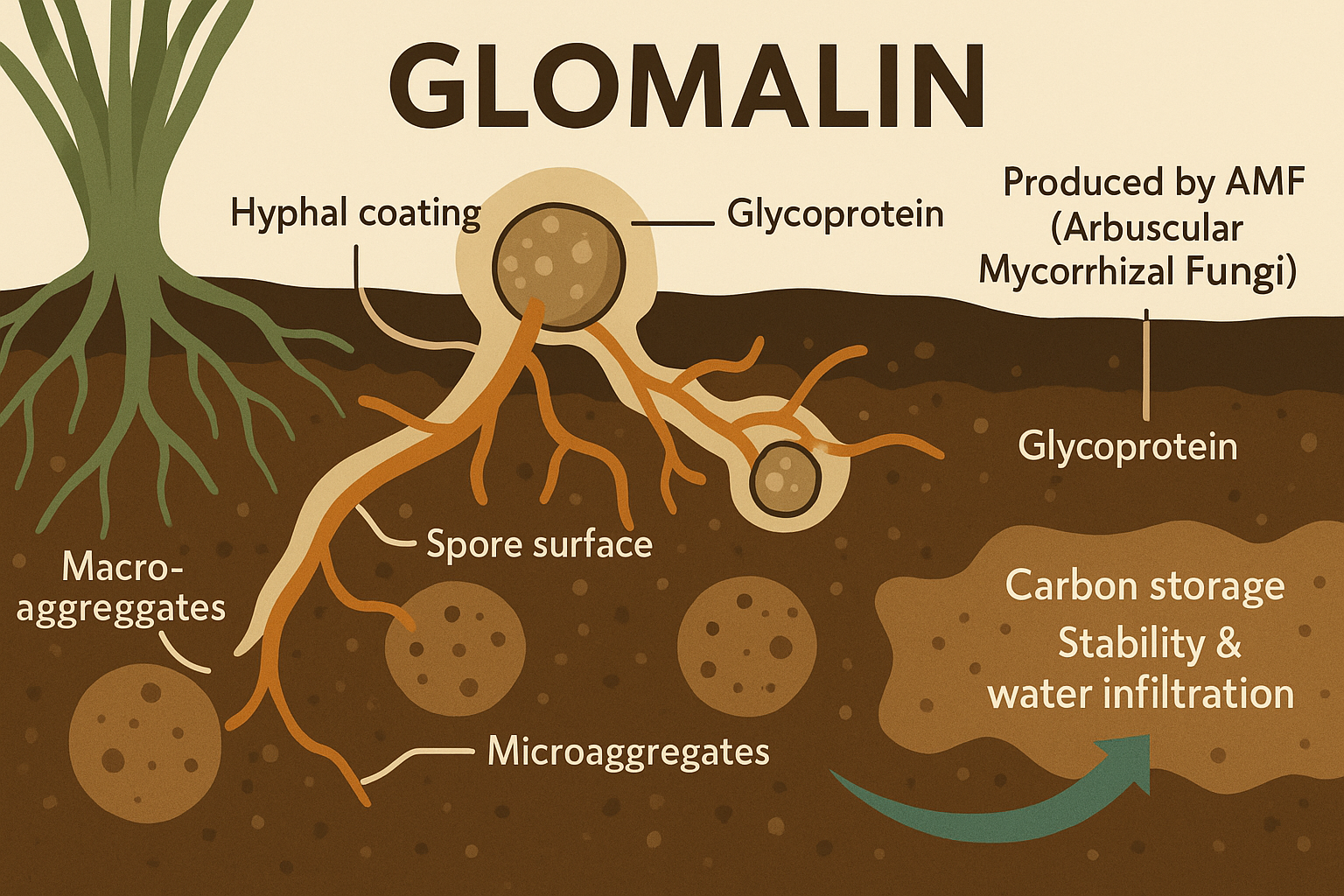
Glomalin plays a crucial role in infiltration. This is a big story when much of the world is now receiving its annual rainfall in two events rather than ten. Glomalin enhances the soil's ability to absorb and retain water, reducing erosion and improving drought resilience.
Glomalin also creates a more favourable environment for soil life to flourish. This protein alone is surely enough reason to consider an AMF inoculum on the seed or seedling, but AMF have even more to offer. They deliver immobile zinc to the plant to optimise leaf size. They mine potassium, trapped in clay platelets; they deliver super immobile calcium into the plant, and they produce biochemicals that stimulate plant immunity. As discussed, they also stimulate PSB, SSB and silica uptake in a three-way relationship that can really have your soil and crop singing.
Ok, you now know how and why these inputs can benefit you, but how can you utilise that information productively?
ACTION PLAN
Here are three simple ways you can utilise the flood of information you have just received,
1) Seed treatment - I have previously discussed the benefits of kick-starting the crop with an inexpensive seed treatment. Now we can utilise our new understanding of AMF, silica and PSB in this context. On my farms, I use a combination of our products, Dia-Life and Platform, for this purpose. Dia life involves silica-rich, micronised Diatomaceous Earth (DE). Platform is a microbial inoculum containing AMF, along with the three most powerful phosphate and silica solubilising organisms. These include Pseudomonas fluorescens, Bacillus megaterium, and Bacillus subtilis.
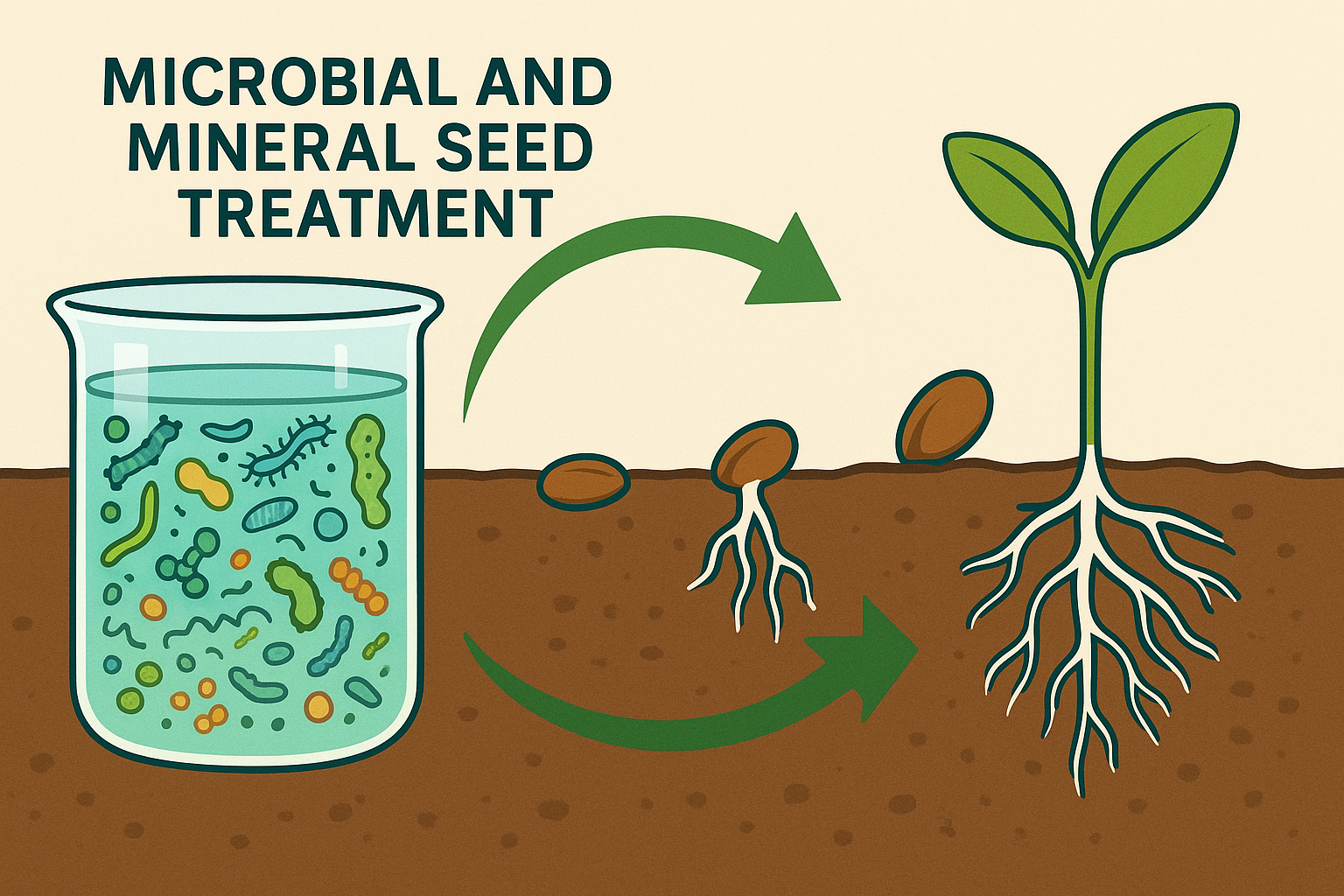
At planting, I always combine an NTS product called Root and Shoot with Platform and Dia-life to further increase the desirable kickstart. This formula includes the trace minerals required to kickstart the crop along with a host of biostimulants, including humates, triacontanol, vitamins, natural hormones, selenium and saponins. When we soak garlic cloves in this mix of Root and Shoot, Platform and Dia-life, for 30 minutes before planting, they jump out of the ground after just four days. If you have grown garlic, you will know that emergence usually takes at least ten days.
2) Brew your own Bacillus benefactors - I’ve touched upon a bacillus blend called MicroForce. We find that 30 to 40 litres of brewed MicroForce per hectare is the most productive application rate to release phosphate and fix nitrogen, while stimulating plant growth. This is a freeze-dried blend that must be multiplied on the farm before use. I often promote the idea of sending the team off to work with a lunchbox, and in this case, the best lunchbox delivers a dual outcome. That lunchbox should always involve Fulvic acid, as it is the best stimulant for bacillus bacteria. Well, it happens that fulvic acid, in itself, is a well-researched tool to release locked-up phosphate. That’s why when we brew MicroForce every six weeks on the farms, we always apply the brew with some fulvic acid.
3) Consider liquid micronised Guano - this is a plant-available phosphate source that doesn’t compromise AMF, like DAP and MAP are prone to do.. It can be used in liquid injection at planting, or it can be fertigated to deliver non-acidic phosphate, calcium and silica. You are looking after your AMF in two ways with this strategy. You’re not sizzling them up with phosphoric acid, and you are also feeding them the silica that AMF love. You could also consider combining Bio-P with the guano to speed the P response. This blend of phosphate-solubilising specialists will. Also, release locked-up phosphate in the root zone to further increase the phosphate delivery to your crop. I favour this super productive “layering” approach, involving the use of strategies with multiple outcomes.
In conclusion
All soils with a fertilising history will have substantial reserves of locked-up phosphate. Hopefully, you are now better equipped to harvest some of this frozen bank account using Silica, AMF and bacteria that solubilise both silica (SSB) and phosphate (PSB).
I wish you all a productive Phosphate harvest.
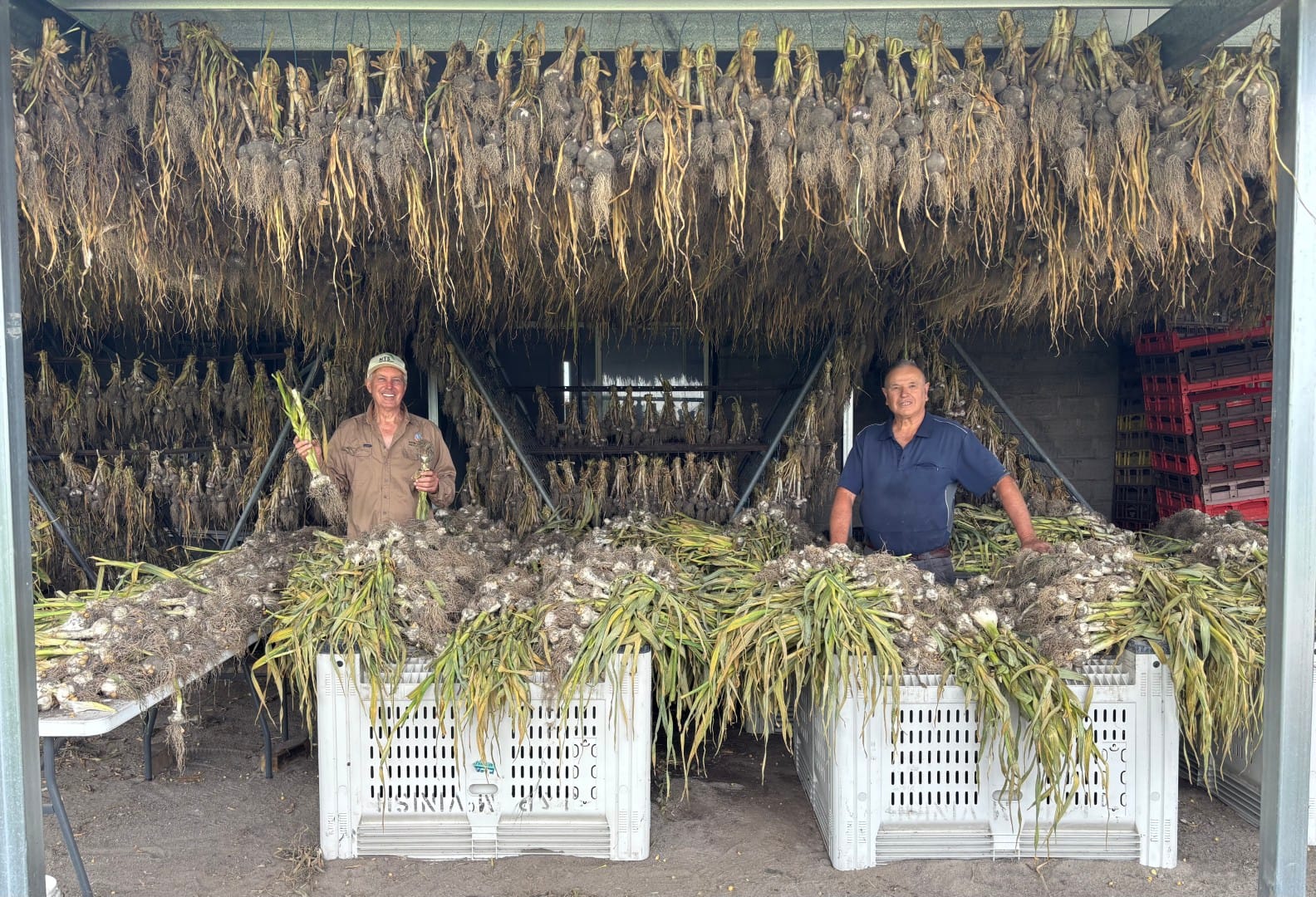
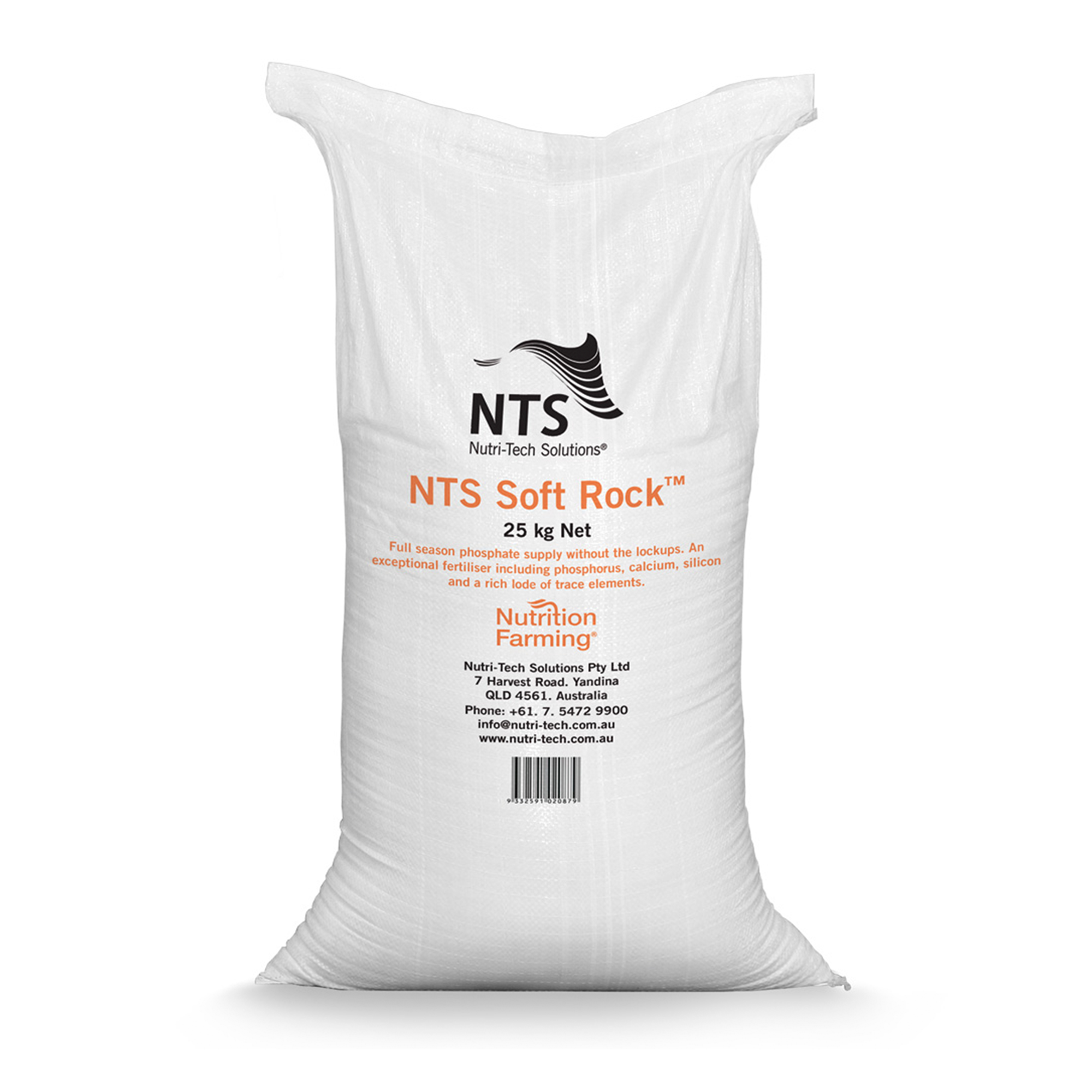
NTS Soft Rock™
Full-season phosphate supply without the lockups. NTS Soft Rock™ is a bio-friendly, colloidal clay-based rock phosphate.
A colloidal calcium phosphate that can never lock up, in stark contrast to all other phosphate sources. This exceptional fertiliser includes 8 – 9% phosphorus, 19.3% calcium, a high analysis of silicon and a rich lode of trace elements. A microbe-friendly bioavailable phosphate, which is an integral part of our soil regeneration program. This is one of the few phosphate sources that do not have problems with high levels of the heavy metal cadmium.

Nutri-Life Platform®
Arbuscular Mycorrhizal Fungi (AMF) (8 species) now blended with a broader range of beneficial microbes including, Bacillus species.
New and Improved Blend to be applied by seed treatment or seedling dip.
Click here for Seed Treatment Instructions with Nutri-Life Platform®.
To order or learn more, call NTS on (07) 5472 9900 or email sales@nutri-tech.com.au.
Certificate in Nutrition Farming
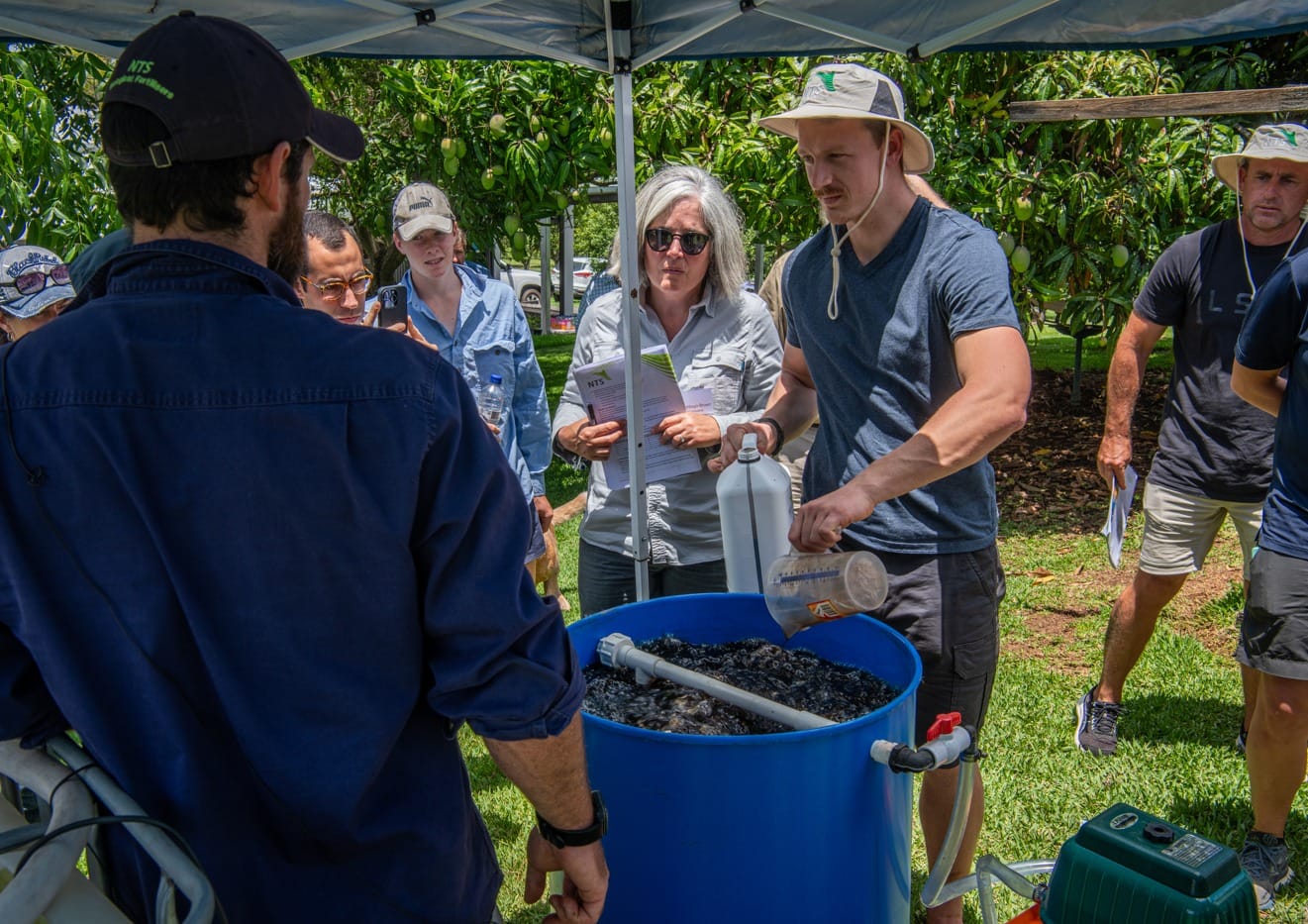
Our next iconic, five-day Certificate in Nutrition Farming® course is scheduled for Monday, 23rd - 27th March 2026.
Our last course was attended by growers and consultants from six countries. It was a wonderful learning opportunity where attendees enjoyed a wealth of education and inspiration from both our presenters and their fellow attendees. We only accept 40 bookings for these courses, so please register if you would like to attend.

